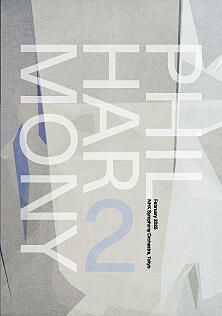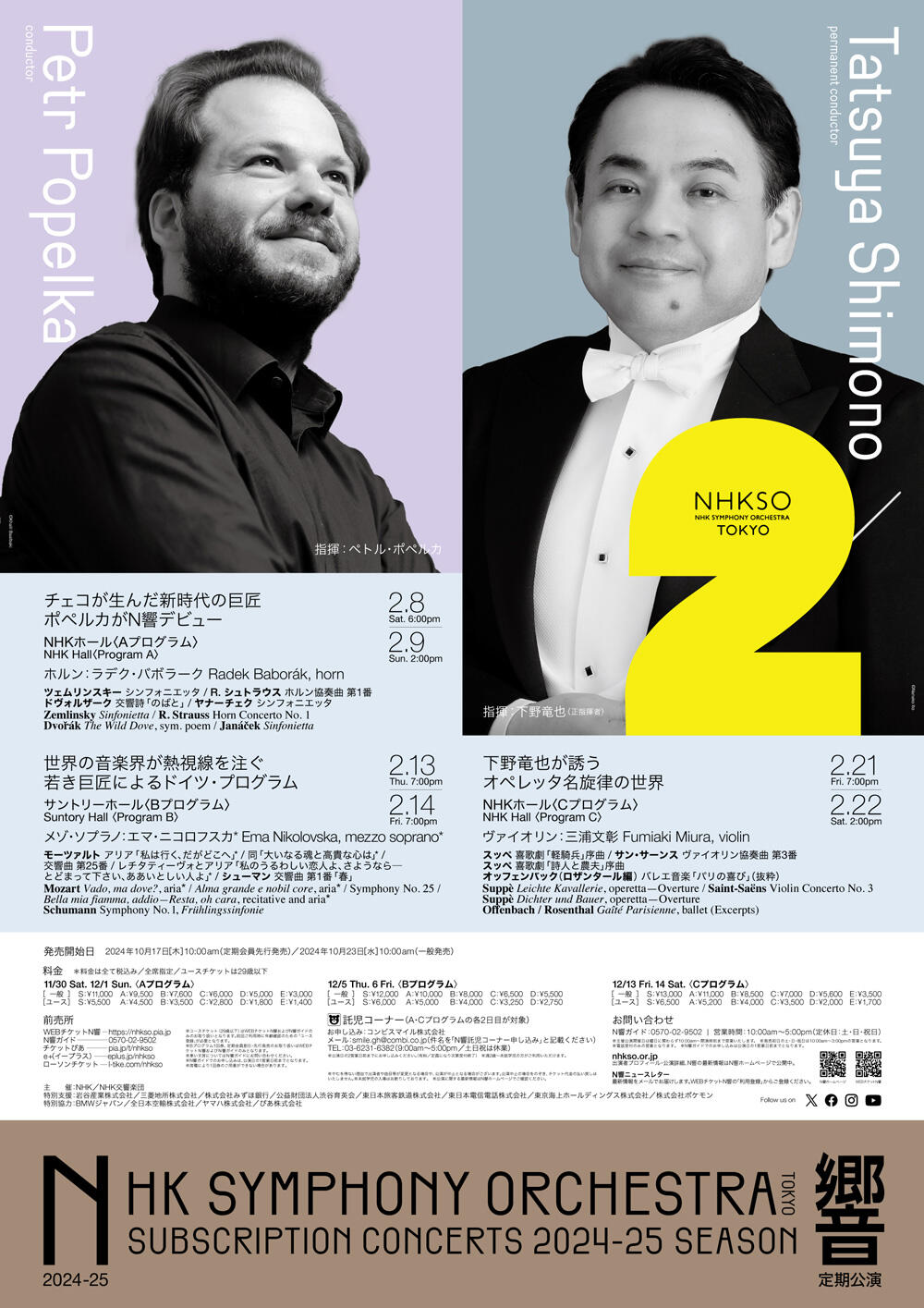- Home
- Concerts
- Subscription Concerts 2024-2025
- Program B
- No. 2032 Subscription (Program B)
No. 2032 Subscription (Program B)
Suntory Hall
Google Map Seating Chart
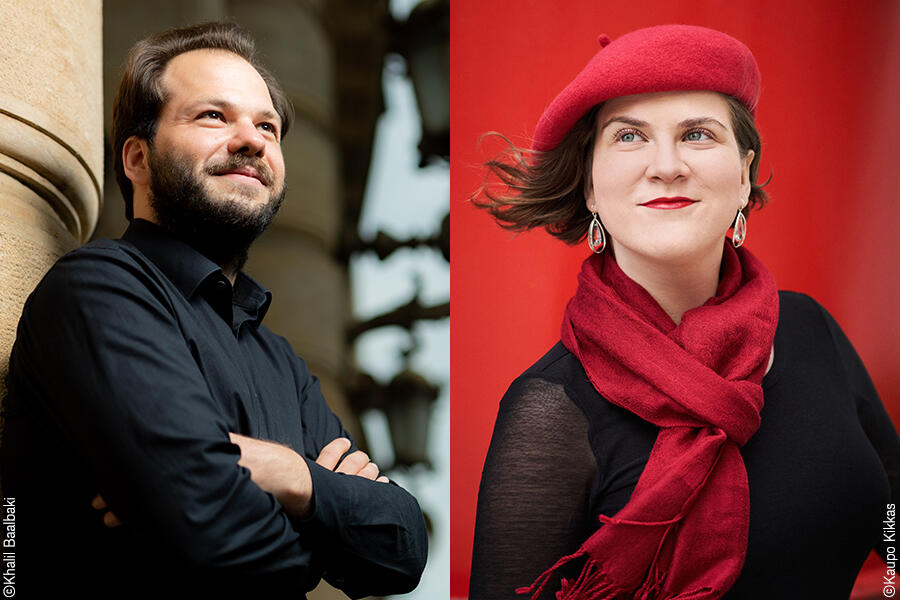
Program
Mozart / Vado, ma dove?, aria K. 583*
In Wolfgang Amadeus Mozart (1756–1791)’s time, it was quite a common occurrence for star opera singers to commission new arias tailored to their voice at the revivals of existing operas, to insert them or substitute original arias with them. Among those divas is the soprano Louise Villeneuve. She made her singing debut in Vienna in June 1789 receiving a local paper’s praise for “her sensitive and expressive acting and her artful, beautiful singing.”
For Villeneuve, Mozart composed the substitute aria Vado, ma dove? (I’ll go, but whither?) K. 583 in the autumn of 1789, two years before his passing at age 35. It was for the revival in Vienna of the comic opera Il burbero di buon cuore (The Good-Hearted Curmudgeon) composed by V. M. y Soler to L. Da Ponte’s libretto and premiered in 1786 in Vienna. The present aria is sung by a leading role Madama Lucilla who finds out her husband is going bankrupt because of her spendthrift nature. Lucilla’s anxiety is revealed in the first half of the song (Allegro, 4/4), while she asks love in a soft voice to guide her in the second half (Andante, 3/4).
[Kumiko Nishi]
Mozart / Alma grande e nobil core, aria K. 578*
As with the above-mentioned K. 583, Alma grande e nobil core (Great soul and noble heart) K. 578 is a substitute aria Wolfgang Amadeus Mozart (1756–1791) composed for Louise Villeneuve in the summer of 1789. It was for the revival in Vienna of D. Cimarosa (1749–1801)’s 1783 comic opera I due baroni di Rocca Azzurra (The Two Barons from Rocca Azzurra) to G. Palomba’s libretto. The story features the betrothed Don Totaro and Laura who’ve never met. Attracted to Laura, Franchetto sends his sister Sandra’s portrait to Totaro so he falls in love with her. K. 578 in B-flat major (the same key as Schumann’s Symphony No. 1 discussed below) lets Laura vow vengeance with determination.
Incidentally, Mozart also wrote the part Dorabella (from his opera Così fan tutte) for Villeneuve who premiered the role in 1790.
[Kumiko Nishi]
Mozart / Symphony No. 25 G Minor K. 183
Mozart’s No. 25 is likely the most somber and dramatic among all of his forty-one numbered symphonies. It was probably for its theatrical tenseness that No. 25 was picked to open the semi-fictional movie about Wolfgang Amadeus Mozart (1756–1791)’s life by the Academy Award-winning director Miloš Forman. No. 25, completed in Mozart’s hometown Salzburg in 1773 when he was seventeen, is one of his only two numbered symphonies set in a minor key along with No. 40 (both in G minor). It has been widely thought that No. 25 was inspired by the Symphony No. 39 in G minor by Joseph Haydn (1732–1809) whom Mozart admired, due to some similarities like the home key, the stormy character and the presence of four French horns (doubling the standard) to expand the melodic/harmonic possibilities at hand.
No. 25 is a four-movement symphony. The first sonata movement is opened by the syncopated principal theme on the strings which is often associated with the Strum und Drang (Storm and Stress) in music, a proto-Romantic style that emphasized agitated, subjective and highly emotional expressions. The next tuneful movement in E-flat major could be compared to an opera scene. The third movement is an unsmiling G-minor minuet, a rareness, having the G-major balmy trio (central) section entrusted only to the winds. As grave as the opening movement, the finale in G minor is a sonata teemed with dramatic sudden changes in dynamics and moods.
[Kumiko Nishi]
Mozart / Bella mia fiamma, addio—Resta, oh cara, recitative and aria K. 528*
The recitativo Bella mia fiamma, addio (My beautiful beloved, farewell!) and aria Resta, oh cara (Stay, oh sweetheart) K. 528 date from the autumn of 1787 when Wolfgang Amadeus Mozart (1756–1791) sojourned in Prague for the premiere of his opera Don Giovanni. He completed the opera at the villa Bertramka near Prague of which he was a frequent guest. The villa was owned by Mozart’s family friends, the Czech composer-pianist-teacher František Xaver Dušek and his wife Josefa, a soprano. And it was for her that Mozart wrote the present recitativo and aria at their villa.
K. 528 demands an exceptionally high level of vocal technique and expressiveness, which is an eloquent witness to how Josefa was accomplished in singing. The text was taken from N. Jommelli’s 1772 opera Cerere placata (Ceres Placated). Both the grievous recitativo and aria are sung by the role Titano (King of Spain) after being condemned to death by Cerere (Queen of Sicily) who is furious that he has eloped with her daughter Proserpina.
[Kumiko Nishi]
Schumann / Symphony No. 1 B-flat Major Op. 38, Frühlingssinfonie (Spring Symphony)
The life of the German Romantic composer Robert Schumann (1810–1856) was not a quiet one. Having suffered from mental illness for years, he jumped into the wintry Rhine River in 1854, prior to his two-year confinement in a sanitarium and subsequent passing at age 46. Still he had his ups and downs, and the Symphony No. 1 was born during one of the blissful periods of his personal life. Composed in January–March 1841 at one sitting, No. 1 was premiered the same year under the baton of Mendelssohn with a warm reception in Leipzig, then Schumann’s base.
The foremost reason behind his “blissful” life of the time was that his marriage to Clara was legally permitted in the summer of 1840 after their battle in court against her father. Following their wedding, Clara announced her pregnancy during the Christmas season. This year 1840 is known as Schumann’s “Year of Song” as his stimulated creativity produced as many as over 120 songs. The next year 1841, called his “Symphonic Year”, was instead the phase when he worked intensively on orchestral works partly at Clara’s suggestion. And it was the Symphony No. 1 that heralded the beginning of this important year.
Originally, Schumann named No. 1 Frühlingssinfonie (Spring Symphony) and gave each movement a title (see below) that he later removed. By one account, a source of his inspiration was the poem by Adolf Böttger Frühlingsgedicht (Spring Poem) celebrating the advent of the season.
The first movement (“The Beginning of Spring”), a B-flat-major sonata, has a solemn introduction opened by a unison fanfare on trumpets and horns. This brief figure will recur throughout the symphony as a unifying element. The lyrical second movement (“Evening”) is followed without pause by the third movement (“Merry Playmates”), a D-minor scherzo with two different trio (central) sections in major keys. The euphoric finale (“Spring in Full Bloom”) is also a B-flat-major sonata. Even its second theme in G minor, introduced by bouncing oboes and bassoons, is unable to conceal its delight.
[Kumiko Nishi]
Artists
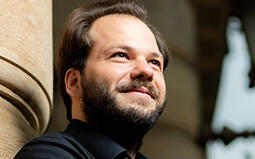 ConductorPetr Popelka
ConductorPetr Popelka
Czech conductor Petr Popelka is now taking Europe and America by storm. In the first five years since the start of his career as a conductor, he has served as Chief Conductor of three orchestras. Considering his talent and competence, he will certainly be promoted to further positions.
Born in Prague in 1986, he served as Deputy Principal Double Bassist of the Sächsische Staatskapelle Dresden for nine years from 2010. It was in 2019 when he started his full-fledged conducting career, and since then, he has stepped onto the podium of many renowned orchestras, achieving remarkable success. From 2020 to 2023, he was Chief Conductor of the Norwegian Radio Orchestra, and became Chief Conductor and Artistic Director of the Prague Radio Symphony Orchestra in 2022. He has also assumed the position of Chief Conductor of the Wiener Symphoniker from the 2024 season.
He made his debut in Japan by guest-conducting the Tokyo Symphony Orchestra in 2022, successfully bringing the orchestra together in a short period of time, very delicately creating sounds and performing in a grand scale, for which he won critical acclaim. He returned to Japan in 2024 with the Prague Radio Symphony Orchestra on its Japan tour.
On this first collaboration with the NHK Symphony Orchestra, he will conduct two subscription programs. In Program A, which includes Sinfonietta by both Zemlinsky and Janáček, he will clearly depict the style and shape unique to each work, while in Program B of Mozart and Schumann, we can expect to hear a well-balanced perfect performance based on the solid structure and good flow.
[Suzuki Atsufumi, music critic]
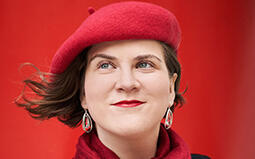 Mezzo Soprano*Ema Nikolovska
Mezzo Soprano*Ema Nikolovska
Ema Nikolovska from North Macedonia was brought up in Toronto, Canada. After studying violin at the Glenn Gould School, she shifted to vocal music, and completed her Master’s in Voice at the Guildhall School of Music and Drama in London. She was selected as a BBC New Generation Artist from 2019–2022, a project known to discover young artists. In the 2022–23 season, she made her role debut as Octavian in Der Rosenkavalier at the Staatsoper Unter den Linden, Berlin, where she had been a member of the Opera Studio, and in October 2023, she sang the lead role of the Woman in Picture a Day Like This by George Benjamin at the Linbury Theatre at Covent Garden, and won high acclaim. In 2024, she returned to Berlin for Stéphano in Roméo et Juliette. She has also appeared in concerts with András Schiff and Martha Argerich.
The pieces she will sing with the NHK Symphony Orchestra will be arias which were written by Mozart to be inserted into other composers’ operatic works, as well as a so-called “concert aria” to be performed at a concert. Because they were all composed for particular singers, they are perfect to judge the singer’s abilities. This performance will be her debut in Japan, and we are excited to see how this promising rising star will perform these songs.
[Naoko Murota, music critic]
Download
Ticket
Program B
No. 2032 Subscription (Program B)
Suntory Hall
Google Map
Seating Chart
Single Tickets Release Date
Pre-sales for Subscribers:Thursday, October 17, 2024
*about subscribers
Sale to General Public:Wednesday, October 23, 2024
Price
| S | A | B | C | D | |
|---|---|---|---|---|---|
| Ordinary Ticket | 12,000 | 10,000 | 8,000 | 6,500 | 5,500 |
| Youth Ticket | 6,000 | 5,000 | 4,000 | 3,250 | 2,750 |
Seating chart Enlarge Print PDF
*tax included
*Subscribers receive a 10% discount (Available at NHKSO WEB Ticket and N-Kyo Guide)
*For wheelchair-accessible seats, please refer to the N-Kyo Guide
Youth Tickets
Youth Tickets are great options for those of 29 years old and younger
Subscription tickets
Release Date
ANNUAL SUBSCRIPTION TICKETS
Mon., July 15, 2024 10:00am
[For Subscribers: Sun., July 7, 2024 10:00am]
Where to buy
NHKSO WEB Ticket | Thursday, February 13 (In English / Seats not selectable)
NHKSO WEB Ticket | Friday, February 14 (In English / Seats not selectable)
NHKSO WEB Ticket (In Japanese only / Seats selectable)
N-Kyo Guide (Purchase by telephone only)
Broadcast
 NHK-FMNo. 2032 Subscription (Program B)
NHK-FMNo. 2032 Subscription (Program B)
Friday, Feb 28, 2025 7:30PM - 9:10PM
Program:
Mozart / Vado, ma dove?, aria K. 583*
Mozart / Alma grande e nobil core, aria K. 578*
Mozart / Symphony No. 25 G Minor K. 183
Mozart / Bella mia fiamma, addio—Resta, oh cara, recitative and aria K. 528*
Schumann / Symphony No. 1 B-flat Major Op. 38, Frühlingssinfonie (Spring Symphony)
Conductor:Petr Popelka
Mezzo Soprano*:Ema Nikolovska
Recorded:February 13, 2025 Suntory Hall
Organized by: NHK (Japan Broadcasting Corporation) / NHK Symphony Orchestra, Tokyo
Under the auspice of:
*Repertoire, conductor, soloists and program order are subject to change without notice.
*Pre-school children are not allowed in the concert hall

